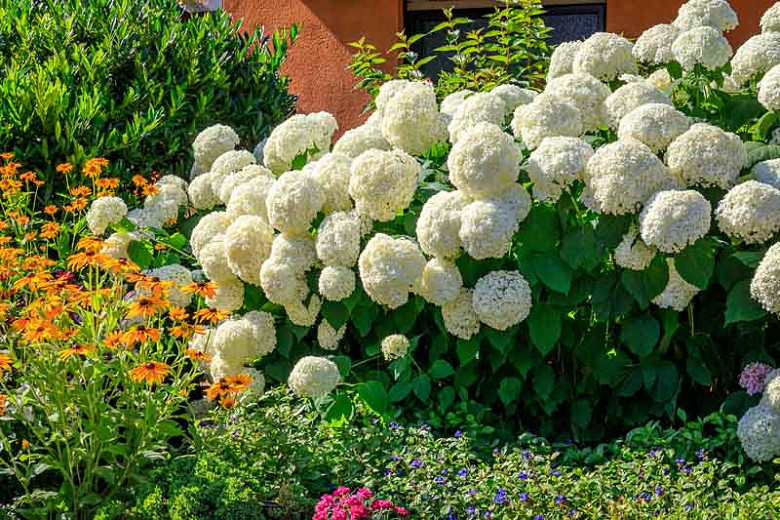The Hortensia Annabelle: The Ultimate Guide To Growing This Stunning Flower
The Hortensia Annabelle: The Ultimate Guide to Growing This Stunning Flower
Annabelle hydrangeas are a popular choice for gardeners of all levels of experience. These beautiful shrubs are known for their large, white flowers that bloom in summer. Annabelle hydrangeas are relatively easy to care for and can thrive in a variety of conditions.
In this guide, we will discuss everything you need to know about growing Annabelle hydrangeas, from choosing the right location to providing the right care. We will also provide some tips on how to troubleshoot common problems.
Choosing the Right Location
Annabelle hydrangeas prefer full sun to partial shade. They will tolerate full sun in cooler climates, but they may need more watering in hot, dry weather. Annabelle hydrangeas also need well-drained soil. If your soil is heavy clay, you may need to add some sand or compost to improve drainage.
Planting Annabelle Hydrangeas
Annabelle hydrangeas can be planted in the spring or fall. When planting, dig a hole that is twice as wide and deep as the root ball of the plant. Backfill the hole with soil, being careful not to bury the crown of the plant. Water the plant well after planting.
Caring for Annabelle Hydrangeas
Annabelle hydrangeas are relatively low-maintenance plants. They need regular watering, especially during hot, dry weather. You should also fertilize Annabelle hydrangeas once a year in the spring. Use a balanced fertilizer, such as 10-10-10.
Pruning Annabelle Hydrangeas
Annabelle hydrangeas do not need to be pruned heavily. However, you may want to remove any dead or damaged branches in the spring. You can also prune Annabelle hydrangeas to control their size. If you want to encourage more flowers, you can prune Annabelle hydrangeas after they have finished blooming.
Troubleshooting Common Problems
Annabelle hydrangeas are generally healthy plants, but they can be susceptible to a few problems. One common problem is leaf spot. Leaf spot is caused by a fungus and can cause brown or yellow spots on the leaves of Annabelle hydrangeas. To treat leaf spot, you can use a fungicide.
Another common problem is chlorosis. Chlorosis is caused by a lack of iron in the soil. To treat chlorosis, you can add iron chelate to the soil.
Enjoying Your Annabelle Hydrangeas
With proper care, Annabelle hydrangeas will reward you with beautiful flowers for many years to come. These stunning shrubs are a great addition to any garden.
Hortensia 'Annabelle' is a popular shrub known for its large, white flowers. It is a hardy plant that can tolerate a wide range of climates and soil conditions. Hortensia 'Annabelle' blooms in mid-summer and continues to flower until early fall. The flowers are typically 20-30 centimeters in diameter and can be quite heavy, so it is important to support the branches with stakes or other means of support.
If you are looking for a beautiful and easy-to-care-for shrub, Hortensia 'Annabelle' is a great option. For more information about this plant, please visit .
FAQ of hortensia annabelle
Q: When does Hortensia Annabelle bloom?
A: Hortensia Annabelle blooms in mid-summer, typically from June to August. The flowers are large and showy, and they can grow up to 12 inches in diameter. The color of the flowers can vary depending on the soil pH, but they are typically white or pale pink.
Q: How much sun does Hortensia Annabelle need?
A: Hortensia Annabelle prefers full sun to partial shade. It can tolerate some direct sunlight, but too much sun can scorch the leaves. If you live in a hot climate, it is best to plant Hortensia Annabelle in a spot that receives morning sun and afternoon shade.
Q: How much water does Hortensia Annabelle need?
A: Hortensia Annabelle needs regular watering, especially during the summer months. The soil should be kept moist, but not soggy. If the leaves start to wilt, it is a sign that the plant needs more water.
Q: How do I fertilize Hortensia Annabelle?
A: Hortensia Annabelle should be fertilized in the spring and summer. Use a balanced fertilizer, such as 10-10-10, and apply it according to the instructions on the label. You can also use a slow-release fertilizer, which will provide nutrients over a longer period of time.
Q: How do I deadhead Hortensia Annabelle?
A: Deadheading is the process of removing spent flowers. This will encourage the plant to produce more flowers. To deadhead Hortensia Annabelle, simply pinch off the spent flowers with your fingers. You can also use a pair of scissors.
Image of hortensia annabelle
5 different images of "hortensia annabelle" from Pinterest.com:
- A large, full hortensia annabelle bush in bloom. The flowers are a deep blue color and are arranged in large clusters.

- A close-up of the flowers of a hortensia annabelle bush. The flowers are a delicate blue color and have a star-shaped shape.

- A hortensia annabelle bush in a garden setting. The bush is surrounded by other flowers and plants, and the flowers of the hortensia annabelle bush are a beautiful contrast to the other colors in the garden.

- A hortensia annabelle bush in a vase. The flowers are a vibrant blue color and are arranged in a beautiful bouquet.

- A hortensia annabelle bush in the fall. The flowers of the bush have turned a beautiful shade of pink and red.

Post a Comment for "The Hortensia Annabelle: The Ultimate Guide To Growing This Stunning Flower"